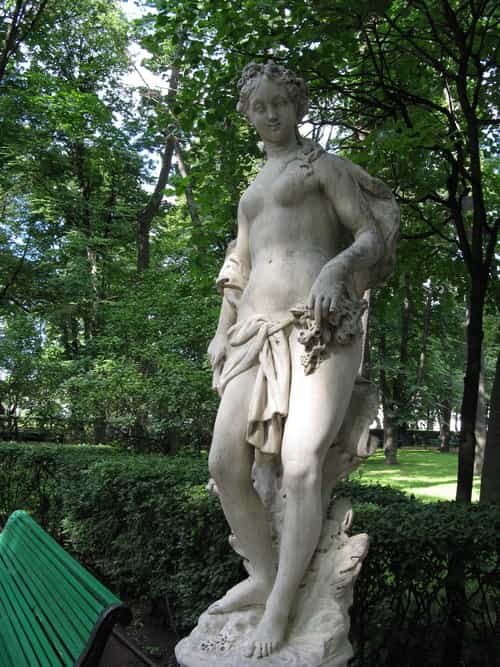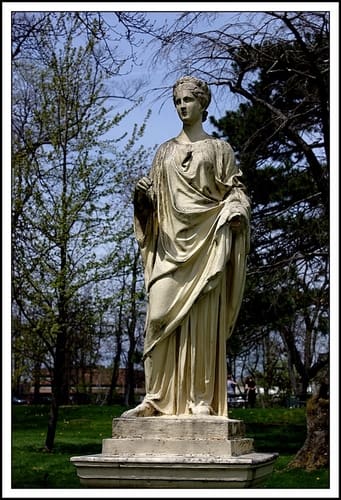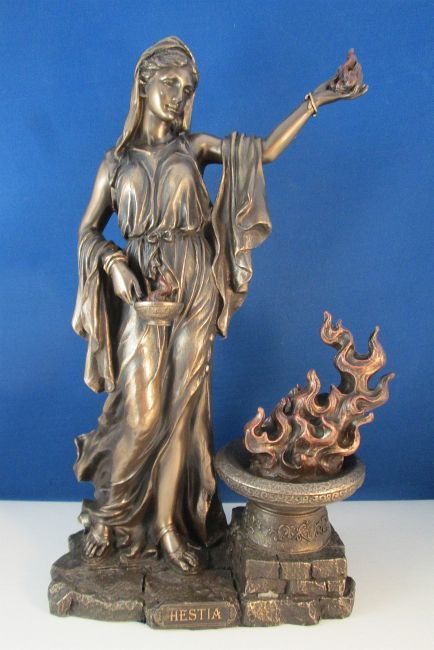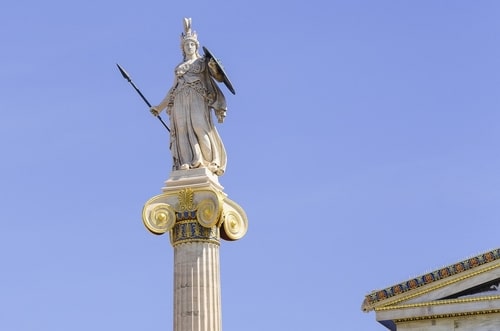The Romans, like the Greeks, attributed gods and myths to explain any incomprehensible phenomena.
Their culture, society, philosophy, and way of living are deeply interwoven with their mythology. Studying their gods and goddesses provides a sneak peek into the everyday lives of the ancient Romans.
It may sound like a thousand years old, but Roman goddesses are as relevant today as ever. Great artists, architects, writers still draw inspiration from the Roman pantheon and draw their imaginations.
Similarly, spacecraft such as Juno and the Artemis lunar project are other examples with attractive connotations. Moreover, plants, animals, constellations, and planets have a common denominator: they are mostly named after Roman goddesses.
This article succinctly elucidates the magnificent and powerful pantheon of ancient Roman goddesses.
-
Who is the most powerful Roman goddess?
Content
Juno, the Queen of goddesses, is the most powerful Roman goddess.
-
How many Roman goddesses are there?
The central forum of Di Consentes consisted of 12 gods and goddesses. They were Jupiter, Juno, Mars, Mercury, Diana, Minerva, Venus, Neptune, Apollo, Ceres, Vulcan, and Vesta
-
Who did Cupid fall in love with?
Cupid had gone to shoot an arrow on Psyche so that she may fall in love with a monster. Instead, he scratched himself with his dart and fell in love with her.
-
Do Pagans still exist?
Yes, Modern Paganism or Neopaganism is a new religious movement that incorporates pre-modern beliefs of historic pagan people. They believe in pantheism, panentheism, animalism.
-
Who did Pagans worship?
Pagans worshipped the Pre-Christian and goddesses through festivals and ceremonies.
10. Aurora
Goddess of Dawn

Source: Wikimedia Commons
Equivalent to Eos in Greek mythology, Aurora is the Roman goddess of dawn. She is presumed to preside over the sky and await the arrival of the sun. The daughter of Hyperion and Theia, Helios and Selene’s siblings, the sun god and moon goddess, respectively.
According to the myth, she hailed in a horse chariot from the sea and sprinkled dewdrops upon the earth. She traveled ahead of the sun while she carried a pitcher full of dew. For the Romans, she heralded the morning red across the sky and was the quintessential symbol of dawn.
Together with her husband, Titan Astraeus, they birthed many children who preside over several allocations such as the winds and the sky. Boreas, Eurus, Zephyrus, and Notus were the winds, whereas Eosphorus and Hesperus were morning stars and evening stars, respectively.
The god of war, Mars, was enamored by her beauty. His keen interest in Aurora irked Venus, who had her fall in love with several mortals. She married Tithonus, a mortal, and begged Zeus to endow him eternal age. Since she forgot to ask for eternal youth, Tithonus became an aging immortal until the gods finally turned into a cicada.
9. Flora
Goddess of Flowers, Spring

Source: Wikimedia Commons
Flora is attributed to flowering plants of the spring season, often with those that bear seeds. She is seen as a symbol of fecundity, fertility, and blossoming. She is also known as the Love goddess for having those elements.
Mythology has it that she was invoked to avert rust on plants for a good harvest in Autumn. Rust was a fungal disease contracted by plants of orange color like rust. Flora usually comes as a twin of Pomona or the goddess of Harvest and Fruit. They complement each other and complete each other.
Flora and Pomona both had their flamen or specific priests to worship them. Numa, the ancient ruler of Rome, had a few priests in service for these deities. Two temples of Flora were built in Rome: one near the grand stadium of Circus Maximus and the other on the slopes of the Quirinal Hill.
Moreover, there was an annual celebration of prosperity and abundance called the Floralia festival in May. Large crowds gathered, donning vibrant colored clothes and adorning their heads with flower wreaths. She, too, was seen by Romans as clad in soft spring tones with blossoms on her hair and carrying a bouquet.
8. Victoria
Goddess of Victory

Source: Wikimedia Commons
Victoria is the Roman equivalent of Nike or the goddess of triumph and victory. Her name is derived from the Latin ‘Vincere,’ meaning ‘to conquer. She is widely depicted as honoring or crowning the victors, and as her picture suggests, her primary function was to reward the victors in battles.
She was closely associated with victors on a battlefield and determined the fate of each soldier. In other words, she could predict the conqueror in any war and reward him. She was most loved and revered by the Roman generals, who returned from war. She symbolized the win or victory over death.
Victoria was the defender of the Roman military as well as success. Many festivities and celebrations were held in her name in the city of Rome. Festival of Honos (honor) is one such festival dedicated to Victoria.
Almost all the gladiatorial games were dedicated and fought in the name of Victoria. She also had her temple on Palatine Hill and was worshipped by all. She is portrayed as a female goddess with enormous wings, trophies, a laurel wreath on her hair, and a shield inscribed with victors’ names.
7. Ceres
Goddess of Agriculture, Grains, Harvest

Source: Wikimedia Commons
Ceres, daughter of Saturn and Ops, is the Roman equivalent of Demeter, the goddess of Harvest. She was important and was responsible for seasons, Harvest, fertility, and famine.
Various mythologies surrounding her life portray her as the mother of multiple deities, associating her with motherhood and fertility. Some even explain the cause of change of seasons and famine; the mythology revolving around Ceres and her daughter, Proserpina, is one of them.
Proserpina was playing in a lake when Pluto saw her and immediately fell for her. He abducted her to the underworld, which angered Ceres. Distraught by the absence of her daughter, she spread famine all over the citizens. That is the story behind famine assumed by the Romans.
Roman god Jupiter intervened and had his brother Mercury talk to Pluto. Pluto agreed to send her back but gave her six seeds of grapes to eat, which would transport her to the underworld for about four to six months. When Proserpina is with Ceres, they are happy and come the spring season, whereas Ceres is unhappy when Proserpina leaves, thereby welcoming the cold winter.
6. Luna
Goddess of Moon

Source: Wikimedia Commons
Luna is the Roman goddess personifying the moon. She is the Roman counterpart of Selene and symbolizes the different phases of life, like the waxing and waning of the moon. Luna is often associated with white items and the number 13. Instinct, luck, creativity are some of her themes.
During ancient times, the moon was considered impregnated to give birth to a new moon. She inspired love and eased childbirth. She assumed the power to hide reality and, on the other hand, to unveil illusions.
Diana, Hekate, and Luna form a triad and rule the heavens, the earth, and the underworld. Each of the phases of the moon represents the goddesses of the trio and their glory. The new moon is Diana, where she is fresh and ready for the hunt. Similarly, during waxing phases, Luna is in great glory and fulness. As the moon wanes, Hekate takes the lead to heal and transform.
One of her key powers is to invoke psychic abilities and instinct, stemming from the moon’s association with night. Since she thrives in the night, she is known as the patroness of solution. The active subconscious mind and its projection in dreams corroborate this attribute.
Romans worshipped Luna and offered wine among other sacrifices at her altar. She has many temples built on her name, but the primary was at Aventine Hill, close to Diana’s temple. She had another temple at Palatine Hill.
5. Venus
Goddess of Love

Source: Pinterest
Venus was a Roman deity, very much inspired by the Greek goddess Aphrodite. Charming and loving, she was the epitome of beauty, similar to that of Aphrodite. However, in Rome, she was attributed to fertility, victory, and even the garden, unlike her Greek counterpart.
She was a popular deity who is featured in several mythologies of Rome. According to the legend, she was birthed from the sea. When Saturn castrated Uranus, his blood dropped on the sea, mixed with foam, and thus, came out Venus.
The name Venus came from Latin’ venus’, which means love. It is no wonder why Venus is associated with love, sexual reproduction, and erotic desire. She could make anybody-both gods and mortals, fall in love with her. Her sexuality was fluid as she was attracted to both males and females.
Incorporated in the Roman pantheon in the third century BCE, she was the catalyst behind the Roman victory over Carthaginians. Hence, she was revered as the symbol of success until the Christian takeover in the fourth century CE.
Being the mother of Aeneas, she was related to Romulus, and Julius Caesar claimed a link to her maternal side, heralding her as the first imperial dynasty.
4. Vesta
Goddess of Hearth, Home

Source: Pinterest
In the Roman religion, Vesta is the goddess of hearth and domesticity, Hestia’s Greek counterpart. Home, fertility, love, and peace are some of the themes that best attribute to her. Similarly, she is identified with veils, donkeys, and fire.
Vesta was the daughter of Saturn and Ops and one of the original gods of Roman mythology. A prophecy warned Saturn that his children would become his undoing. Thus, he swallowed his children one by one. As the firstborn child, she was eaten first. Instead of their last child, Saturn gulped a stone and vomited all his children out of his body.
She is presented as innocent and virgin, often fully clothed and veiled. Similarly, she is associated with a donkey. Since the hearth sustained the family’s bread baking and the donkey churned the mill for flour, they were an essential part of Roman culture and house. The kettle and flames were an inseparable symbol of Vesta.
During the third century BC, her temple was built in Palatine Hill, and six priestesses were called Vestal Virgins. They kept a fire going and prepared ritual sacrifices for about 30 days there. Each year on March the first, the fire was burnt out and re-kindled. If the fire went out on any other day, it was considered a bad omen for the people of Rome.
3. Diana
Goddess of Hunt

Source: Pinterest
Diana is derived from ‘diviana,’ ‘dium,’ and ‘dius,’ which means sky or daylight. Diana was associated with fertility, the moon, and childbirth. She is said to help women conceive and ease delivery. She was the daughter of Jupiter and Latona and the twin sister of goddess Apollo.
Artemis is her Greek counterpart goddess as they both are goddesses of hunting. Emerging as an indigenous goddess of woodland, she was worshipped as Diana Nemorensis or Diana of the woods for a long time. Her cult carried torches to a river in Rome and believed her to be a triad of goddesses.
Diana is easily recognized in artworks like slinging an arrow and bows, accompanied by a hounding dog or a deer. She is lightly clothed or barely covered and sometimes wearing nothing at all. She functioned as the goddess of wild animals and domestic animals and peasants, and other lower-class people.
Rome’s Aventine Hill bears the oldest temple of Diana, dating to the sixth century BC. Since she was also the goddess of slaves, plebians and other lower-class people sought asylum in her temple. Every August, the thirteenth observed a festival exclusively dedicated to Diana.
2. Minerva
Goddess of Wisdom and War

Source: Pixabay
Amongst the Roman pantheon, the wisest and most crafty, artsy, intelligent, and philosophical is Minerva, the Roman equivalent of Athena. She presided in heaven and looked down over everything and everyone. It gave her an upper hand of foresightedness and careful calculation.
While other Roman goddesses were heavily borrowed from the Greek religion, Minerva was an original Roman goddess. She was the descent of an Etruscan deity, Menrva, and assumed a similar name as well. Only later was she attributed with Athena after being Hellenized in the third or fourth century BCE. While Minerva and Athena are both known for their tactics during warfare, only the former is said to blow thunderbolts.
Minerva, along with Juno and Jupiter, formed a formidable triumvirate called the Capitoline Triad. She started the Capitoline Triad by replacing Mars from the Archaic Triad, Jupiter, Quirinus, and Mars. It was a significant shift from the Italian provincial power to the Mediterranean.
All craftsmen, artists, military leaders, politicians, and philosophers looked up to the venerated Minerva. Moreover, she was at the helm of all Roman mythology. There were many temples built in her dedication, and people observed various festivals in her name. It declined in the fourth century CE when the rise of Christianity eclipsed all her power and glory.
1. Juno
Goddess of Marriage, Home, Family

Source: Wikimedia Commons
The defender of the Roman state and the champion of women, goddess Juno, was the chief of the Roman goddesses. Her Greek counterpart is goddess Hera, who is attributed the same. Another member of the Capitoline Triad was Jupiter, the leader of gods in the Roman mythos.
Juno was one of Rome’s first gods and goddesses, who look after the personal lives of her worshipper and the Roman state. Depending on the time and place, she was a Midwife, a Mother, a Queen, and so on. Also associated with the moon, she symbolized the cycles of waxing and waning of all living beings.
People widely worshipped her in Rome due to this fluidity in her avatar. There were many festivals held in her honor and plenty of scattered temples all over the country. Unfortunately, her glory began fading after the advent of the Roman Empire in the first century BCE.
The name Juno invariably means youth or youthfulness in many words. She was the counterpart of the Etruscan deity, Uni, in ancient mythology. The sophisticated kingdom of Etruscan inspired Roman people heavily. Hence, suggesting Juno’s origins. Since Uni and Juno are similar names, it eggs on the presumed suggestion.
Being the matron goddess, she supervised all the internal affairs of Rome and the people who inhabited it. She blessed marriages, sexual reproduction, and even cyclical menstruation in women.
Conclusion
Much of Roman myth was borrowed from the Greeks. However, they do have their tales, completely separate from those of the Greeks and some goddesses. Their significance lies in their power and influencing many contemporary phenomena, such as building temples and ceremonies. They have established faith and the fact that women ought to be worshipped and respected.
